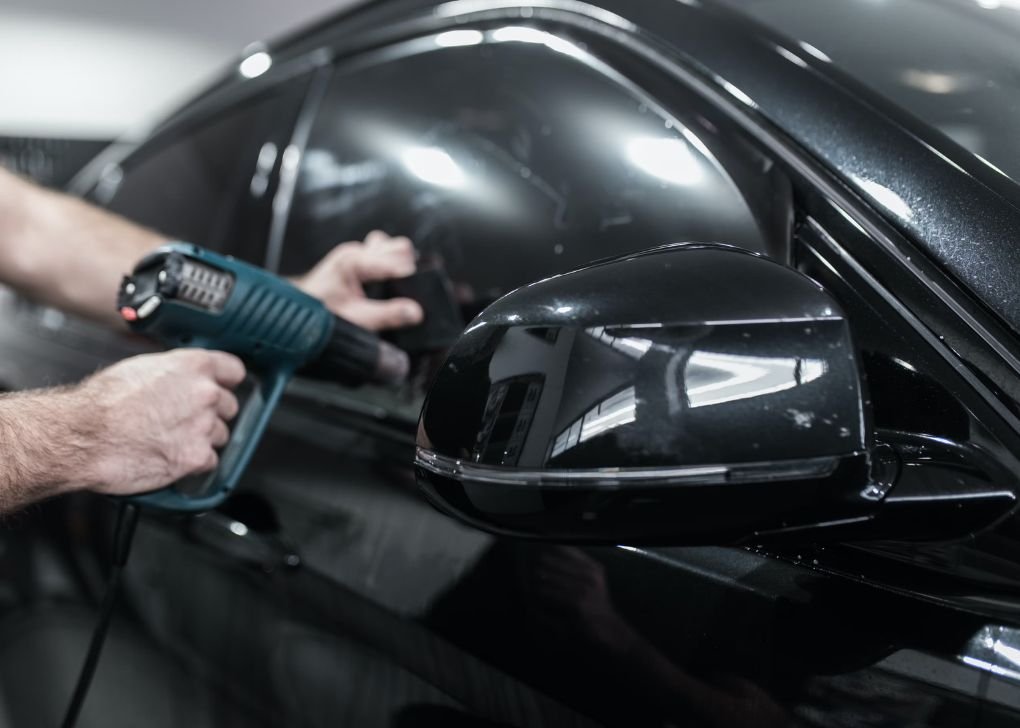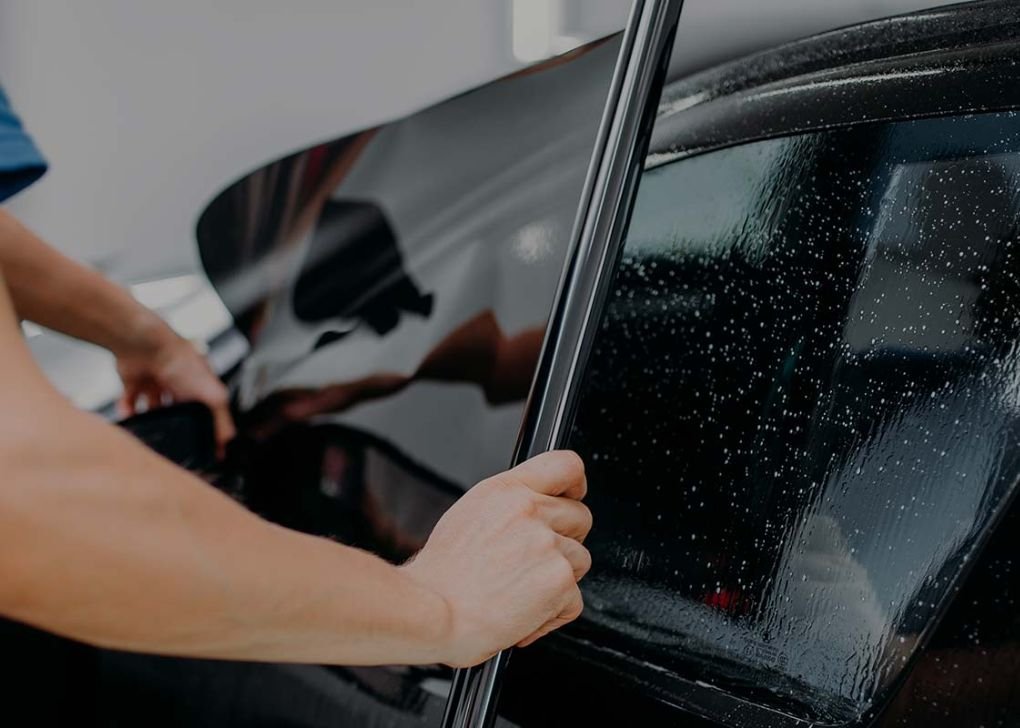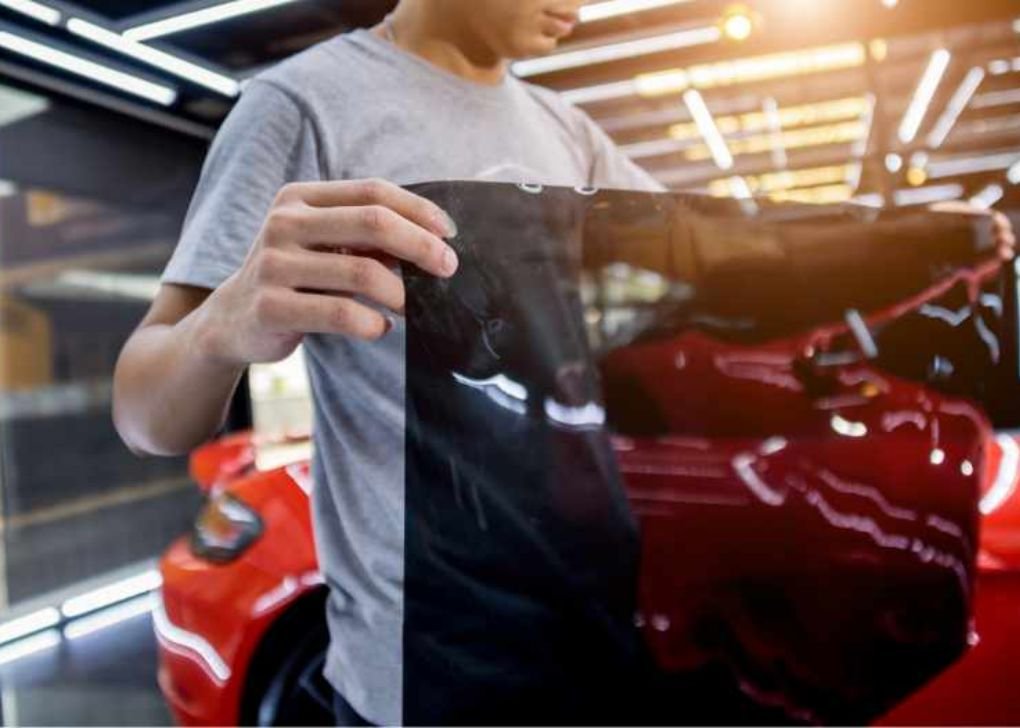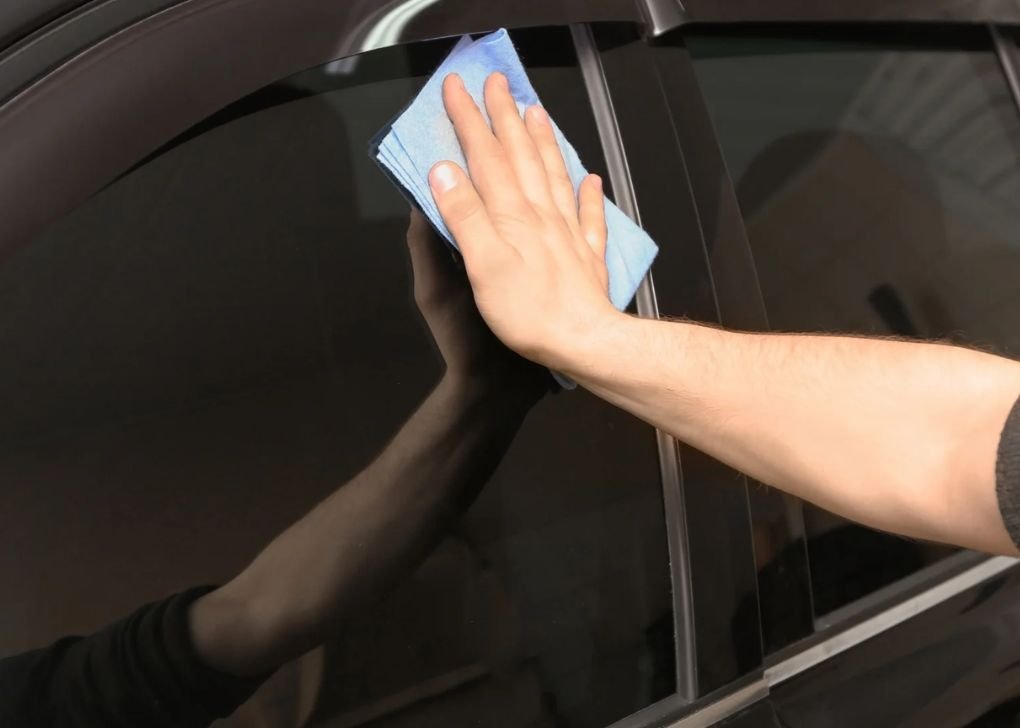In Pennsylvania, the darkest legal tint for car windows is 70% light transmittance for the front side windows and windshield. This means the tint must allow at least 70% of the light to pass through. The law aims to ensure driver visibility and safety. For rear windows, any darkness can be used, provided the vehicle has side mirrors. These regulations help balance the desire for privacy and style with the necessity for road safety and law enforcement visibility.
Darkest legal tint for Cars in Pennsylvania
- Windshield: Must allow more than 70% of light in, any darkness on top 3 inches.
- Front Side windows: Must allow more than 70% of light in.
- Back Side windows: Must allow more than 70% of light in.
- Rear window: Must allow more than 70% of light in.
Darkest legal tint for SUV and Vans in Pennsylvania
- Windshield: Must allow more than 70% of light in, any darkness on top 3 inches.
- Front Side windows: Must allow more than 70% of light in.
- Back Side windows: Any darkness can be used.
- Rear window: Any darkness can be used.
Please note: benefits, clear, PA, Window Tint Percentage Examples, legal advice, eastern mid-Atlantic state, winters, updated, reduced fuel consumption, Window Tint Shades Chart, cars, insulation, summers, cool, law firm, content, sweltering, re-sell, privacy, privacy tint, private, light, car, exemption, accuracy, AC, 1999, interior, current window rules laws, visible light transmission, auto tint, completeness, IR light, clear, transparent window films, window film, rejected solar heat, fuel consumption, illegal window tint, lawyers, VLT, 5% VLT, vehicle, benefits, dark privacy window tinting, Pennsylvania, 90% VLT, heat, value, adequacy, currency, warm, style, investment, UV light, frost.

Windshield Tint Rules in Pennsylvania
In Pennsylvania, windshield tint rules are specific and must be adhered to for legal compliance. The state mandates that window tint on the front windshield of all vehicles, including cars, SUVs, trucks, and vans, must be nonreflective. The tint is allowed on the top three inches of the front glass. This section can be tinted but should not be so dark as to obstruct the driver’s view. Pennsylvania’s regulations also specify that the tint must allow at least 70% Visible Light Transmission (VLT) or higher, ensuring sufficient visibility through the windshield. This regulation aims to balance the benefits of tinting with safety considerations, making it crucial for vehicle owners to ensure their tint is rated within these legal parameters.
Related Article: Why Are There Gnats In My Car
Car Window Tint Laws in Pennsylvania
Pennsylvania’s car window tint laws distinguish between different types of vehicles. For sedans, coupes, and other cars, the law specifies that window tint on the side windows and rear windshield must allow more than 70% Visible Light Transmission (VLT). This means a lighter tint is permissible, ensuring sufficient visibility. However, larger vehicles like SUVs and vans may have some leniency for a darker tint on these windows. It’s important to note that a mirrored appearance or highly reflective tints are generally not allowed. There is also a window tint law exemption for certain medical conditions, which permits a darker or more reflective tint than usually rated by state law. This ensures that vehicle owners in Pennsylvania can choose their window tinting within legal bounds while considering their personal needs and preferences.

MPV Window Tint Laws in Pennsylvania
For Multi-Purpose Vehicles (MPVs), including sport utility vehicles, trucks, passenger vans, and motor coaches, Pennsylvania tint laws offer some distinctions compared to standard cars. While the front side windows, including the driver and shotgun seat areas, must maintain a lighter VLT of more than 70%, the rear side windows and rear windshield can have a darker tint. This allows for a degree of privacy blackout tint in these larger vehicles, which is often sought by owners of MPVs for added privacy and protection. It’s crucial to note that any car window film applied should not have a metallic or excessively reflective appearance to ensure safety and compliance with state regulations. This distinction in the law recognizes the different needs and uses of MPVs compared to smaller cars.
Other Window Tint Rules in Pennsylvania
In addition to VLT ratings, Pennsylvania’s window tint regulations include stipulations on reflectivity limits and color. Metallic and mirrored tints, including silver, gold, copper, and similar finishes, are generally banned to prevent excessive reflectivity. For side windows and the rear window tint, the state law requires dual side view mirrors if the tint is darker than allowed for the front side windows. PA tint laws also provide a dispensation for medical exemptions. A medical professional must certify the medical needs of the vehicle owner for a darker or more reflective window tinting. Installers and retailers of tint products often provide window tint stickers to certify the legality of the installed tint. These stickers are crucial in avoiding a window tint ticket for an illegal tint. Automobile owners must ensure that any dark window tint adheres to these legal window tint requirements to avoid penalties and ensure a functional and legal finish for their cars.
Window Tint Violations in Pennsylvania
In Pennsylvania, window tint violations can lead to significant consequences. If a vehicle is found with an illegal tint that doesn’t comply with PA tint law, the driver can be cited. Window tint tickets usually start at around $110 for a single offense but can escalate to larger fines for multiple times or repeated breaches. Legally speaking, when cited, the vehicle owner may be required to appear before a court official or a judge. One of the grounds for such a citation is the tint’s non-compliance with state regulations. In addition to the financial cost, the offending tint must be removed, adding to the inconvenience and expense. It’s crucial for vehicle owners to adhere to state laws to avoid these penalties.

Pennsylvania Window Tinting Laws
Pennsylvania has specific regulations for car window tinting, which are essential for car owners to understand. The state dictates how dark and reflective a window tint can be. These rules are designed to ensure safety on the road for both the driver and other road users. The legal limit for tint darkness and reflectivity varies based on the type of vehicle and the specific window being tinted. Car owners in Pennsylvania must read and comprehend these state regulations to ensure their vehicle’s tint complies. For those considering tinting their car windows, it’s advisable to seek necessary information from reliable sources or consult with professional tinting services. This will help avoid any legal issues and potential fines for non-compliance. Additional details can be found on official Pennsylvania state websites or by contacting local authorities.
Window tint darkness in Pennsylvania
In Pennsylvania, the window tint darkness is regulated by the amount of Visible Light Transmission (VLT) the film permits through the car windows. For sedan cars, the Front Side windows must allow more than 70% light in. This requirement also applies to the Windshield, where only the top 3 inches can be tinted. For SUVs and vans, this regulation extends to the Back Side windows and Rear Window. The percentage of VLT indicates how much light the tint allows through the glass. It’s a crucial measure to balance privacy with safety and visibility. For most sedans, SUVs, and other vehicles in Pennsylvania, ensuring the tint darkness adheres to these state guidelines is essential for both legal compliance and road safety.
Window tint reflection in Pennsylvania
Pennsylvania window tint law also addresses window tint reflection. For sedans, SUVs, and vans, the law specifies that the window tint should not be mirrored or have a metallic appearance. This is to ensure that the tint does not excessively reflect incoming light or glare, which can be hazardous for both the driver and other road users. The Back Side windows and Front Side windows should have a tint that can reduce heat and light without creating significant window reflection. Vehicle owners in Pennsylvania need to pay attention to these guidelines to ensure their tint complies with state regulations, balancing the benefits of tinted windows with safety considerations for everyone on the road.

Other Pennsylvania window tint rules and regulations:
Beyond the basics of VLT and reflectivity, Pennsylvania’s window tinting laws have other regulations and stipulations. Enacted in 1999, these laws require that all tinted windows must be certified by the Film manufacturers, and Stickers must be displayed to indicate compliance. This assists law enforcement authorities in quickly verifying if the tint is within legal limits. Dual side mirrors are mandatory on all vehicles with a tinted back window, ensuring sufficient rear visibility. Medical Exceptions allow for special tint requirements due to health conditions, but these need valid documentation. Restricted Colors, like certain shades of red and blue, are banned. To ensure you have the most accurate and updated information, it’s advised to contact the DMV or a trusted industry leader in legal tinting based on your place of residence within the county. These rules and regulations are there to ensure safety and compliance, and it’s important to share with confidence that any film you fix on your car meets these standards in 2023.
Related Article: WHY DOES MY RPM GO UP AND DOWN WHILE PARKED
State of Pennsylvania Info
Pennsylvania, a US state located in the North-eastern region, is known for its rich history and diverse landscapes. It’s the 33rd most extensive and the 6th most populous state, with a population of 12,964,056 as per the latest data. Covering an area of 46,055 s q mi, Pennsylvania is the 9th most densely populated state in the United States.
The state is home to a number of significant cities and towns, each with its unique charm and character. Philadelphia, the largest city in Pennsylvania, is a major cultural and economic hub, known for its historical significance. Pittsburgh, located in Allegheny County, is another major city known for its steel industry history and vibrant cultural scene. Smaller towns such as Lancaster, known for its Amish culture, and Gettysburg, famous for its civil war history, add to the state’s diverse appeal.
Apart from these, Pennsylvania encompasses various other towns and boroughs such as Allentown, Erie, Reading, Bethlehem, Scranton, and Lancaster. The state also includes counties like Bucks, Montgomery, Delaware, Chester, and Berks, each contributing to its rich tapestry.
The Great Lakes region touches part of the state, adding to its geographical diversity. This region, along with areas like the Allegheny National Forest and the Pocono Mountains, makes Pennsylvania a place of natural beauty and outdoor activities.
Furthermore, Pennsylvania’s smaller communities like State College, home to the renowned Pennsylvania State University, Jim Thorpe, known for its Victorian architecture, and Centralia, famous for its mining history, all add to the state’s rich cultural and historical fabric.
The State of Pennsylvania, with its rich history and diverse geography, is a key player in the Mid-Atlantic region of the 50 United States. Its landscape varies from the urban sprawl of Philadelphia and Pittsburgh to the serene wilderness of Erie near Lake Erie and the mountainous terrains in Tioga and Somerset. Pennsylvania’s towns and cities like Harrisburg, the Capital, Lancaster, York, and Gettysburg are steeped in historical significance, each telling a unique story of America’s past.
The state is bordered by New York, New Jersey, Delaware, Maryland, West Virginia, and Ohio, along with a national border with Canada. This strategic location has made Pennsylvania a commercial and cultural hub, connecting the northeastern states with the broader American Midwest.
In terms of population, Pennsylvania boasts numerous populous cities such as Allentown, Bethlehem, Reading, Scranton, and Erie, each contributing significantly to the state’s economy. Smaller but notable locations like King of Prussia, Cranberry Township, and West Chester add to the state’s charm and diversity. With an area of 119,283 km2, Pennsylvania’s vast and varied landscape encompasses everything from bustling metropolitan areas to tranquil countryside, making it a microcosm of the United States itself.
Average Rating